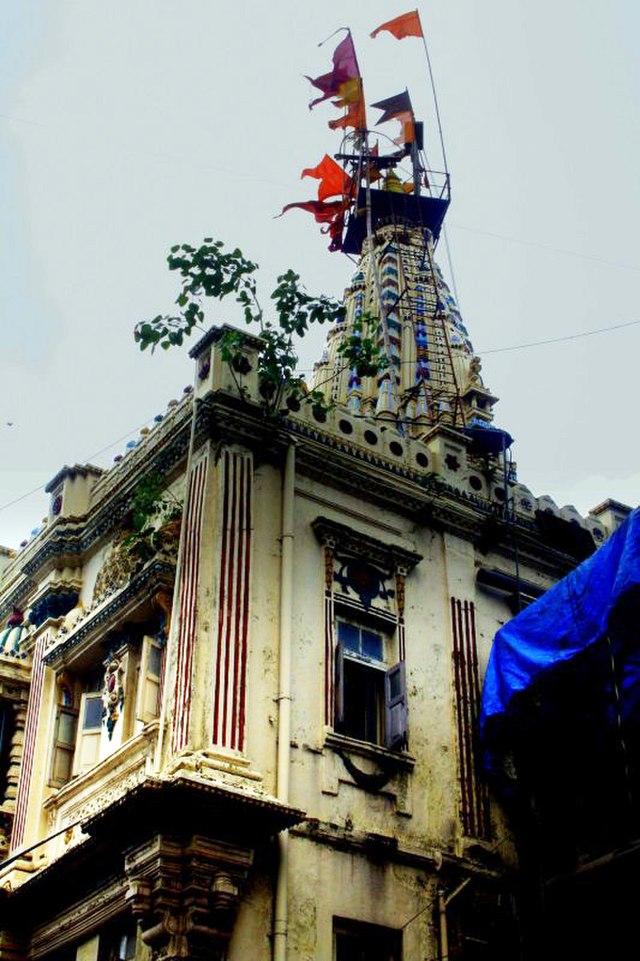Introduction
Mumba Devi Temple is an ancient Hindu temple located in the bustling city of Mumbai, India. This sacred abode is dedicated to the goddess Mumba, who is believed to be the patron deity of the Koli fishermen and the original inhabitants of Mumbai. Over the years, the temple has gained immense popularity among devotees and tourists alike. In this article, we will explore the rich history, legend, architecture, and significance of The Temple, along with the festivals celebrated here, how to reach it, and other attractions nearby.
Table of Contents
History of Mumba Devi Temple

The origins of Mumba Devi Temple can be traced back to the 6th century CE when the temple was built by the Koli fishermen community. The temple has been reconstructed several times throughout history; the current structure was built in 1737 after the original temple was demolished during the reclamation of land to accommodate the growing city of Bombay (now Mumbai).
Legend behind the Name:
The name “Mumba” is derived from the words “Maha” (meaning great) and “Amba” (meaning mother), which are synonymous with the goddess Mumba. The goddess is believed to protect the city and its inhabitants from various calamities. The city of Mumbai itself gets its name from Mumba Devi, symbolizing the deep-rooted connection between the city and the goddess.
Architecture and Design of the Temple:
The Mumba Devi Temple exhibits a traditional architectural style, characterized by a simple and elegant design. The temple is adorned with intricate carvings and features a main shrine, a sanctum sanctorum, and several smaller shrines dedicated to other deities.
The sanctum sanctorum houses the idol of Mumba Devi, which is made of black stone and adorned with a silver crown, a nose ring, and a gold necklace. The idol is placed on an elevated platform, with a silver-plated arch framing it. Just outside the sanctum, one can find the idols of other deities, including Hanuman, Ganesh, and Annapurna.
Significance of the Temple:
Mumba Devi Temple holds great religious significance, particularly for the Koli fishermen community and the original inhabitants of Mumbai. The locals believe that the goddess Mumba protects them from natural disasters and grants them prosperity. People from all over India visit the temple to seek the blessings of the goddess and to pay their respects.
Festivals Celebrated at Mumba Devi Temple:
Several Hindu festivals are celebrated with great enthusiasm and devotion at Mumba Devi Temple, some of which include:
- Navratri: This nine-day festival is dedicated to the worship of Goddess Durga and her various forms. The temple is beautifully decorated during this time, and devotees flock to the temple to participate in the festivities.
- Diwali: The festival of lights is celebrated with great fervor at the temple. Devotees light lamps and offer prayers to the goddess, seeking her blessings for prosperity and happiness.
- Durga Puja: This is another major festival celebrated at the temple in honor of Goddess Mumba. The temple comes alive with the sounds of drums, conch shells, and devotional songs during this time.
How to Reach Mumba Devi Temple:
Mumba Devi Temple is located in the Bhuleshwar area of South Mumbai. The temple is easily accessible by various modes of transport, including local trains, buses, and taxis. The nearest railway station is Chhatrapati Shivaji Terminus (CST), which is just 1.5 km away from the temple. From the station, one can hire a taxi or take a bus to reach the temple.
Things to Do and See Around Mumba Devi Temple:
After visiting the temple, one can explore the bustling markets and narrow lanes surrounding the temple area. Some popular attractions near Mumba Devi Temple include:
- Crawford Market: This historic market is famous for its fresh fruits, vegetables, and spices. It’s also a great place to buy souvenirs and handicrafts.
- Zaveri Bazaar: This is Mumbai’s famous jewelry market, where one can find a wide range of gold, silver, and diamond jewelry.
- Chor Bazaar: This market is popular for its antiques, vintage items, and second-hand goods.
Best Time to Visit Mumba Devi Temple:
The best time to visit Mumba Devi Temple is during the early morning or late evening hours when the temple is less crowded. The months of October to March are considered ideal for visiting, as the weather is pleasant and conducive for sightseeing.
Tourist Attractions Near Mumba Devi Temple:
Some popular tourist attractions near Mumba Devi Temple include:
- Gateway of India: This iconic monument is a must-visit for anyone traveling to Mumbai. It offers a stunning view of the ArabianSea and is a prime spot for photography enthusiasts.
- Marine Drive: Also known as the Queen’s Necklace, Marine Drive is a picturesque promenade that offers a relaxing experience by the sea.
- Chhatrapati Shivaji Maharaj Vastu Sangrahalaya: Formerly known as the Prince of Wales Museum, this museum houses a vast collection of art, artifacts, and relics from India’s rich history.
Safety Tips for Visitors:
- Be aware of your surroundings and keep your belongings secure at all times.
- Avoid visiting the temple during peak hours to avoid large crowds.
- Dress modestly when visiting the temple – covering shoulders and legs is recommended.
- Follow the rules and guidelines set by the temple authorities for a hassle-free visit.
Conclusion:
Mumba Devi Temple is a spiritual oasis amid the bustling city of Mumbai. Its rich history, exquisite architecture, and sacred significance make it a must-visit destination for devotees and tourists alike. By following the safety tips and exploring the nearby attractions, one can make the most of their visit to this iconic temple.
FAQs:
Q: Is there an entry fee for visiting Mumba Devi Temple?
A: No, there is no entry fee for visiting the temple.
Q: What are the temple timings?
A: Mumba Devi Temple is open from 6:00 AM to 9:00 PM daily.
Q: Is photography allowed inside the temple?
A: Photography is generally not allowed inside the sanctum sanctorum. However, one can take pictures of the temple’s exterior and the surrounding area.
Q: Are there any accommodations near Mumba Devi Temple?
A: Yes, there are several hotels and guesthouses near the temple, catering to different budgets and preferences.
Q: Are there any restaurants or eateries near Mumba Devi Temple?
A: Yes, there are several restaurants and street food vendors near the temple, offering a variety of cuisines to suit different tastes.


